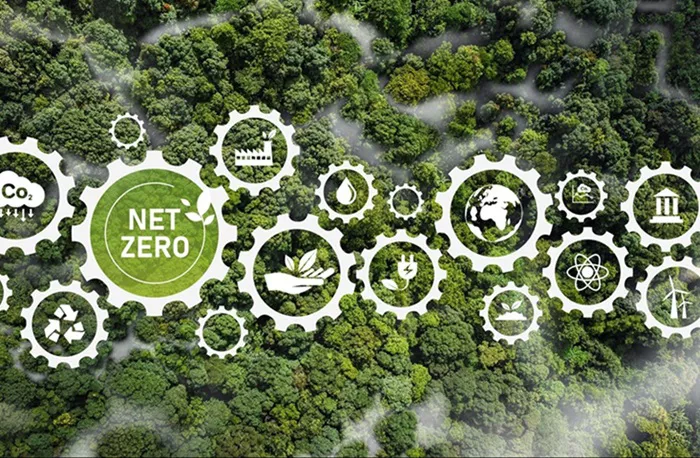A new report from advisory firm DNV GL, titled Energy Transitions Outlook 2024, highlights a significant milestone: global energy emissions are expected to peak this year. Despite the rapid growth of renewable energy, achieving net-zero emissions by 2050 appears increasingly unattainable.
During a recent press briefing, David Cairns, Vice President of Equinor, described the report’s findings as an “emotional rollercoaster.” While the expected peak in emissions offers a glimmer of hope, the projected slow decline following this peak poses serious challenges to meeting critical climate targets.
Among the report’s key insights is the prediction that new energy systems, predominantly powered by renewables, will become the standard for nearly all nations within the next 30 years. However, the pace of this transition remains insufficient to align with global climate goals. Remi Eriksen, DNV’s Group President and CEO, emphasized the importance of accelerating emission reductions, warning that the current trajectory could lead to a temperature increase of 2.2°C by the end of the century—far above the Paris Agreement targets.
Transitioning to Renewable Energy
The report indicates a significant shift in the primary energy supply mix by 2050, with the share of fossil fuels expected to drop from 80% today to 50%. This transition will be largely driven by the surge in solar power and battery technology, which have made significant strides in cost-effectiveness. Solar installations rose by 80% last year, surpassing coal in many regions, while battery prices continue to decline, enhancing the accessibility of solar energy around the clock.
By 2050, wind energy is projected to account for 28% of electricity generation, with offshore wind capacity increasing at an annual rate of 12%. Electric vehicle (EV) sales also surged by 50% last year and are on track to make up 50% of global passenger vehicle sales by 2031.
The Role of China and Geopolitical Challenges
China’s influence in the global energy transition is critical, as the nation accounted for 58% of global solar installations and 63% of new EV purchases last year. While it remains the world’s largest CO2 emitter, China’s reliance on fossil fuels is expected to decline rapidly due to ongoing investments in solar and wind technologies.
Eriksen noted the necessity of navigating potential tariff backlashes against Chinese clean technology to maintain progress toward Paris Agreement goals. Cairns pointed out that while China can be perceived as both a threat and an ally, the upcoming U.S. presidential election and its implications for the Ukraine conflict may significantly impact the global energy landscape.
The report further reveals a growing tendency among nations to divert budgets from energy transition initiatives toward military spending, influenced by ongoing conflicts in the Middle East, tensions in the Taiwan Strait, and the Russia-Ukraine war.
Slow Progress in Hydrogen and Carbon Capture Technologies
The DNV report highlights a disappointing pace of development in hydrogen and carbon capture and storage (CCS) markets. Hydrogen is projected to account for only 4% of final energy demand by 2050, a slight decrease from last year’s estimate of 5%. Meanwhile, CCS is expected to capture merely 2% of global emissions by 2040 and 6% by 2050.
Eriksen pointed to obstacles such as public opposition and regulatory delays that hinder the rollout of these essential technologies, suggesting that current regulations do not adequately reflect the urgency of climate change amid competing concerns over energy security and inflation.
Nick Cooper, CEO of Storegga, emphasized the need for consistent policies to foster an environment where hydrogen and CCS can thrive, warning that erratic policy shifts undermine investor confidence.
The Future of Hydrogen
The report forecasts that hydrogen will not meet even 1% of global energy demand by 2030, a significant shortfall from DNV’s previous net-zero scenario. After initially garnering significant interest, the hydrogen sector has faced numerous setbacks.
Duncan Clark, head of Ørsted UK and Ireland, believes hydrogen can recover if real projects are prioritized and supported by robust commercial and regulatory frameworks. He stressed the need for simplified frameworks that clarify revenue streams and share risks effectively.
Jake Tudge, Corporate Affairs Director at National Gas, argued that hydrogen’s reputation can be salvaged through successful projects, particularly in hydrogen blending, which could serve as a crucial market enabler.
Ultimately, Eriksen underscored the necessity of hydrogen in achieving Paris Agreement goals but warned that without a meaningful carbon price or stimulating support, hydrogen will struggle to gain traction in the market.
Related topics:
- New Report Highlights Use Cases for Advanced Nuclear Energy
- Mitsubishi Powers Up Final Unit of Major Gas-Fired Project in Thailand
- Groundbreaking Progress as STEP Demo Completes Phase 1 of 10-MW sCO₂ Power Cycle Project

